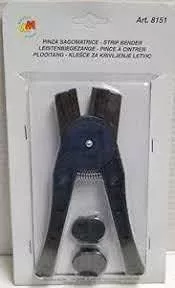
The Mantua Model 8151 Old School Plank Bender is an innovative tool designed to streamline the process of bending wood for model ship construction. In this article, I will explore its features, advantages, and how it enhances your woodworking experience, ensuring precision in every bend.
Product Features
| Product Name | 8151 Old School Plank Bender |
|---|---|
| Manufacturer & Model | Mantua Model – Italy |
| Category | Tools & Home Improvement |
| Features | Wood Model Kit, Assembly Required, Instructions Included |
| Description | Designed to bend wood planks effectively using a plier-like mechanism, ensuring precise bends for model ship building. |
Product Overview
| Pros |
|---|
| Sturdy construction and easy to use |
| Achieves better results than traditional methods |
| Includes instructions for effective use |
Understanding the Importance of the Plank Bender
When it comes to working with wood for model ship building, the Mantua Model 8151 Old School Plank Bender stands out and can truly transform your experience. Using this tool effectively starts with understanding the assembly process. It is straightforward and requires minimal effort. Just ensure all parts are securely connected before you proceed. Once assembled, you’re ready to bend planks like a pro.
To get the best results, I recommend using thin wood, ideally no thicker than 1/16 inch, as this allows for easier manipulation. Soak the wood planks in water for about 15 to 20 minutes before bending; this step is vital as it makes the wood more pliable. While using the plank bender, hold the tool snugly and apply even pressure to achieve consistent curves without breaking the wood.
Maintenance is another critical aspect that I find often overlooked. Regularly check the bender for any debris or signs of wear to ensure it operates smoothly. I’ve found that keeping the joints lubricated can significantly prolong its lifespan. Also, always be mindful of common pitfalls, like applying excessive force or attempting to bend thicker materials, as this can lead to fractures or an uneven shape.
By following these practical tips, you’re set to maximize your experience with the Mantua Model 8151, leading to woodwork that is not only precise but also showcases your craftsmanship.
Maximizing Your Experience with the Mantua Plank Bender
When it comes to maximizing your experience with the Mantua Model 8151 Old School Plank Bender, understanding the assembly process is key. I found that the instructions are straightforward, but taking a moment to familiarize yourself with all the components can save you time later. Start by ensuring that all parts are accounted for: the bender itself, the handle, and the heating element. It’s important to assemble the bender securely, as a loose connection can lead to misalignment during use.
Best practices for bending wood include selecting the right type of wood for your project. I recommend using softwoods like pine or basswood, as they are easier to bend without breaking. Before you start bending, soak your planks in water or steam them for about 10-15 minutes. This step significantly improves flexibility and minimizes the risk of splintering.
Maintaining the tool is equally essential. After each use, I wipe down the bender to remove any residue from the heated wood. This not only helps preserve the tool but also enhances its performance for future projects. To avoid common pitfalls, like overheating, keep an eye on the temperature settings; a moderate level is often sufficient.
By following these tips, you can enhance your results and ensure a successful woodworking experience, embracing the sheer pleasure of model ship building with the Mantua Plank Bender at your side.
Conclusions
In conclusion, the Mantua Model 8151 Old School Plank Bender is a valuable addition to any model ship builder’s toolkit. It enhances the bending process, promising efficiency and accuracy in your woodworking projects. With its sturdy design and helpful features, it stands out as a reliable ally for crafting stunning models.